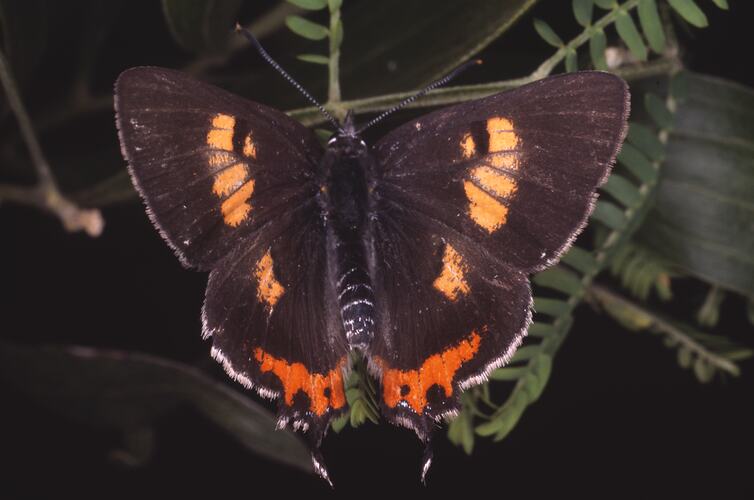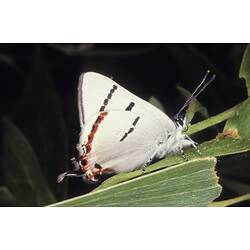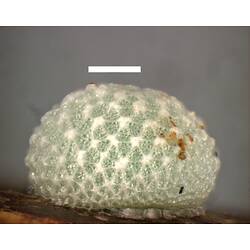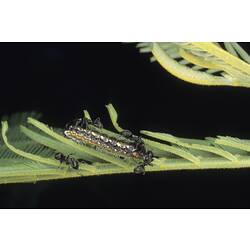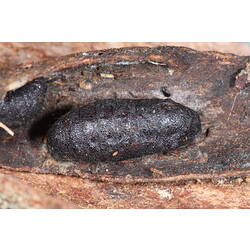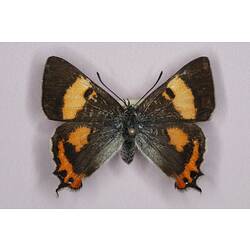General Description
Adult: Above: brownish-black, forewing with orange patch; hindwing with red band and black tail. Beneath: grey with black bands. Wingspan 26-29 mm. Egg: Pale blue-green, mandarin-shaped, reticulated pattern of pits, 0.95 x 0.63 mm. Larva: Black with greenish-brown bands and lines, prominent cream patches, hairy, segments noticeably humped, 22 mm. Pupa: Black or brownish-black, smooth, 10-15 mm.
Biology
Silky hairstreak adults usually fly close to their breeding areas. It is generally an early spring butterfly, but a few fresh specimens collected in summer from warmer locations suggest that a partial second generation may occur at some locations. Eggs are laid singly or in small groups on the stems of the host plant. Both small and large trees may be used. Larvae feed openly on the foliage of various wattle species during the day and are always attended by ants (Anonychomyrma biconvexa). In Victoria the main host plants are Silver Wattle (Acacia dealbata), and Blackwood (A. melanoxylon). Larval development is usually completed by early summer. On smooth-barked and small trees the larvae pupate under the bark of adjoining eucalypt trees or stumps, usually less than a metre from the ground, otherwise pupation occurs in crevices of the host tree. Pupae can number 30 or more per tree at the centre of a colony. Pupae remain dormant until spring.
Distribution
The species occurs cool temperate areas of New South Wales, the Australian Capital Territory, Victoria and Tasmania. One subspecies has been recorded from Victoria largely in tall wet forests. It is common but local in the Dandenong ranges.
Habitat
Tall, wet forests.
More Information
-
Animal Type
-
Animal SubType
-
Brief Id
Small brown-black butterfly with red patches on wings.
-
Colours
Black, Cream, Orange, Red
-
Maximum Size
29 mm
-
Habitats
-
Diet
Nectar
-
Endemicity
-
Commercial
No
-
Conservation Statuses
CITES: Not listed, FFG Threatened List: Not listed, EPBC Act 1999: Not listed, IUCN Red List: Not listed
-
Plants
Wattle trees, Blackwood
-
Taxon Name
-
Scientific Author
Waterhouse & Lyell, 1914
-
Common Name
Silky Hairstreak
-
Other Names
Australian Hairstreak , Victorian Hairstreak
-
Kingdom
-
Phylum
-
Subphylum
-
Class
-
Subclass
-
Superorder
-
Order
-
Suborder
-
Superfamily
-
Family
-
Subfamily
-
Genus
-
Species Name
chlorinda
-
Subspecies
zephyrus
